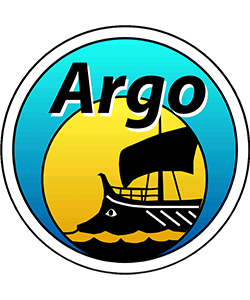GDAC data
For users interested in using the official Argo NetCDF files, the GDACs should be the route to access Argo data. Both GDACs offer access to the complete Argo data collection as managed by the Argo Data Management Team, including float metadata, detailed trajectory data, profile data and technical data all in NetCDF format. It is important to understand the naming system of the files as well as the variable names and quality control flags within each data file. See the ADMT Documentation page for the Argo User’s Manual and the Argo quality control manual for more information.
Please make sure to cite Argo data properly.
HTTP and FTP Access
The http and ftp sites are identical at the GDACs and are organized into three main folders:
- a “dac” folder which sorts the data by Data Assembly Centre (DAC)
- a “geo” folder which sorts the data by ocean basin
- a “latest_data” folder which includes the most recent data
Note on FTP access: most internet browsers no longer open FTP sites. Instead, it is recommended to download an FTP client such as Cyberduck or FileZilla to access the GDACs via ftp.
There is one other folder on the GDACs: the aux folder which contains data from experimental sensors. Learn more here.
There are also several index files in the top directory containing a list of metadata on each type of Argo data file (meta, prof, tech and traj) contained in the “dac” and “geo” folders. It is possible to download these lists and search them for floats in specific regions, times, DACs, etc. There is also a greylist which contains a list of floats that likely have sensor problems.
via DOI
Each month since the start of 2014, there is a snapshot taken of the GDACs which is assigned a DOI. Users can simply choose the latest month’s snapshot of the GDAC and access it via the DOI link making it easy to cite in publications and preventing the user from having to maintain a mirror of the GDACs on their system.
via the GDAC synchronization service
The rsync server “vdmzrs.ifremer.fr” server provides a synchronization service between the “dac” directory of the GDAC with a user mirror. See the ADMT website for more details. From the user side, the rysnc service:
- Downloads the new files
- Downloads the updated files
- Removes the files that have been removed from the GDAC
- Compresses/uncompresses the files during the transfer
- Preserves the files creation/update dates
- Lists all the files that have been transferred (easy to use for a user side post-processing)
Examples
Synchronization of a particular float:
- rsync -avzh –delete vdmzrs.ifremer.fr::argo/coriolis/69001 /home/mydirectory/…
Synchronization of the whole dac directory of Argo GDAC:
- rsync -avzh –delete vdmzrs.ifremer.fr::argo/ /home/mydirectory/…
Data selection tools on the GDACs
Both GDACs also provide data selection tools which allow users to enter different search criteria and then select different ways to display and receive the data. Regardless of the GDAC, users can search for data using the following means of selecting data:
- By selecting a latitude/longitude and time range
- By DAC (Data Assembly Centre)
- By Delayed Mode or Real Time quality
After providing selection criteria at the US GDAC Data Browser, one can expect the following:
- A profile location plot for all profiles returned by the query (may be plotted with or without float ID for queries returning many profiles)
- Download of selected profiles (in netCDFnetCDF Multi-Profile format) as a TAR file
- Plots of T-P and S-P for individual profiles
- Plots of float tracks for individual floats
The EuroArgo Selection Tool allows one to search by the following criteria:
- region in space and time
- measured parameter
- depth
- quality of data
- deployment year
- float country or PI
- Data Assembly Centre
- deployment cruise
- platform type
- telecommunications type
The results can be downloaded as a csv file, an Argo NetCDF or a Copernicus netCDF. A map is displayed with the locations of all the resultant floats and users can interact with plots for all desired variables.
Other Portals
Argo float data and metadata are available from a variety of web services such as ERDDAP and Thredds.
